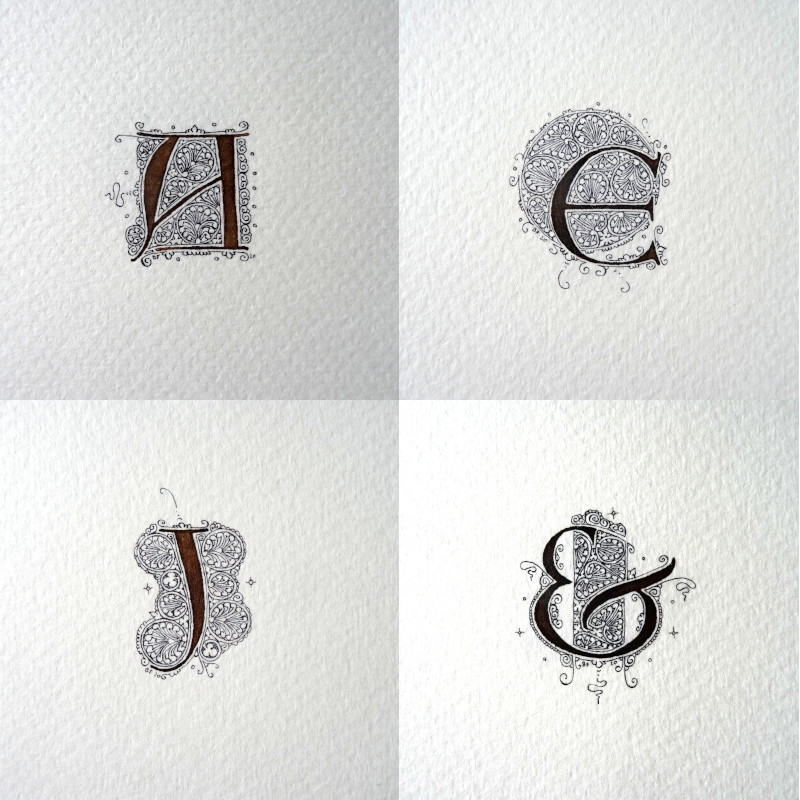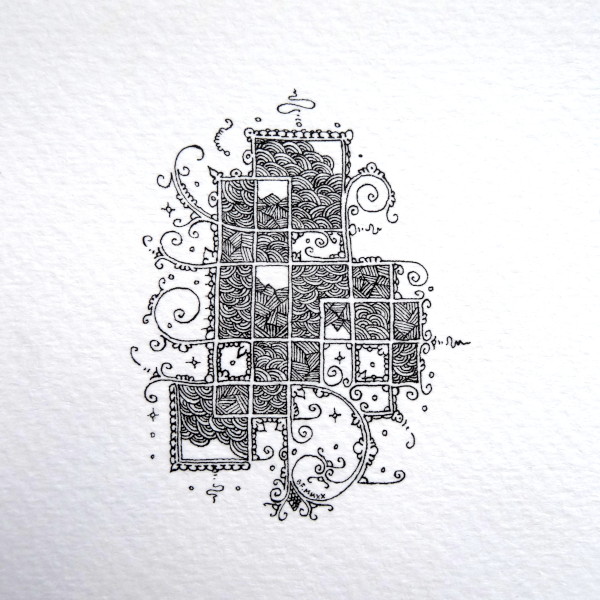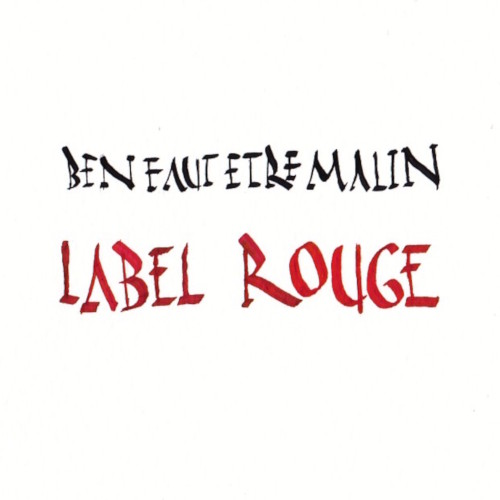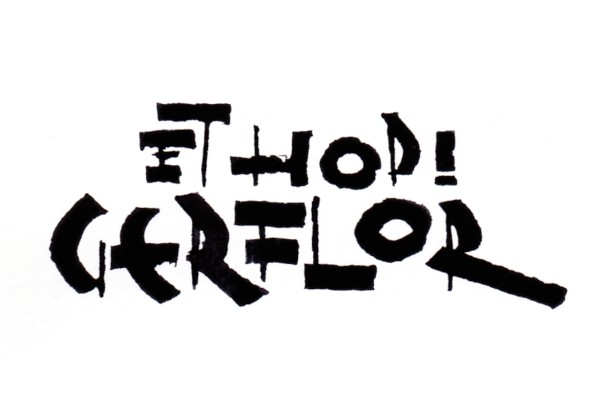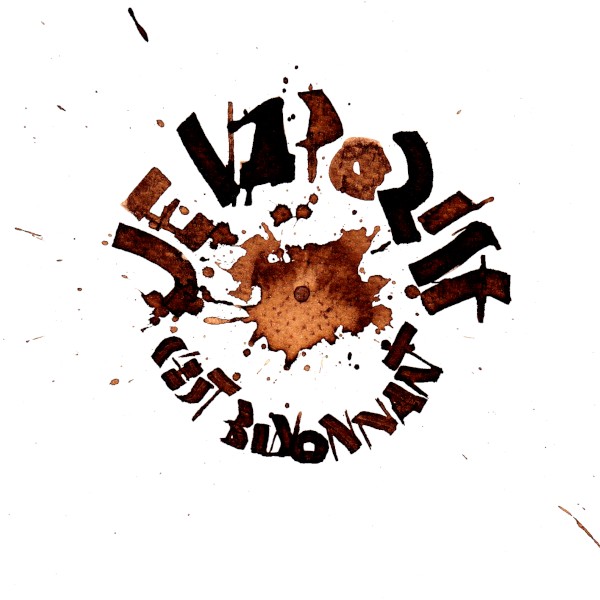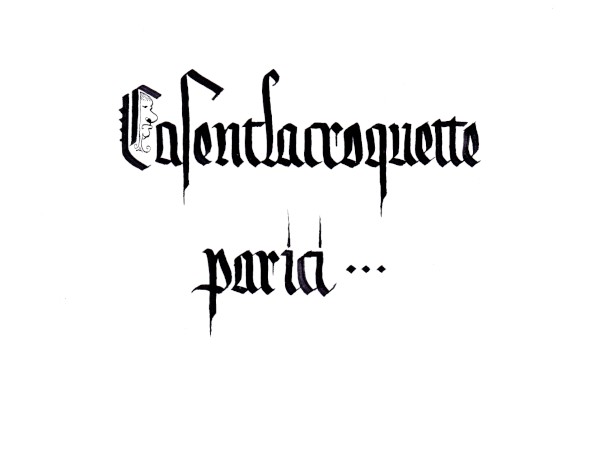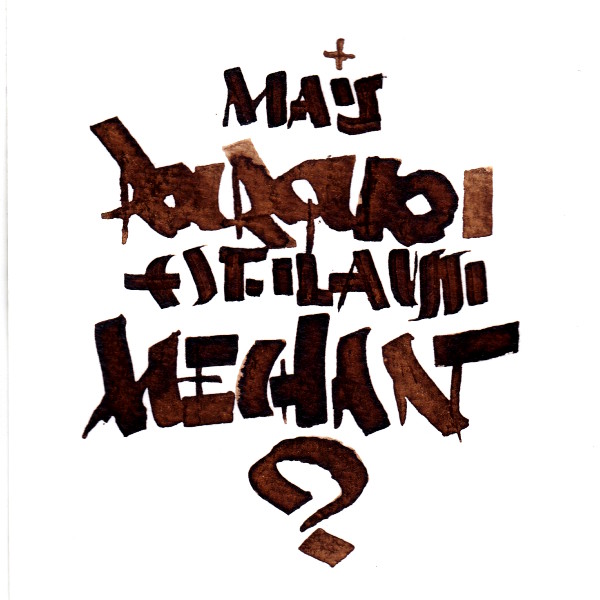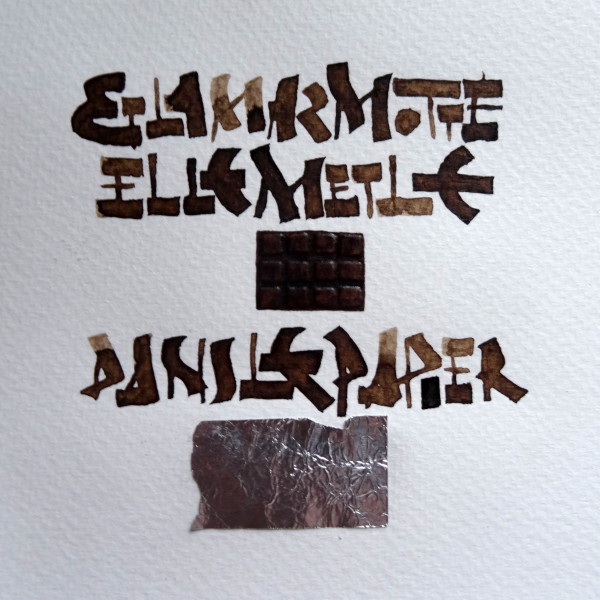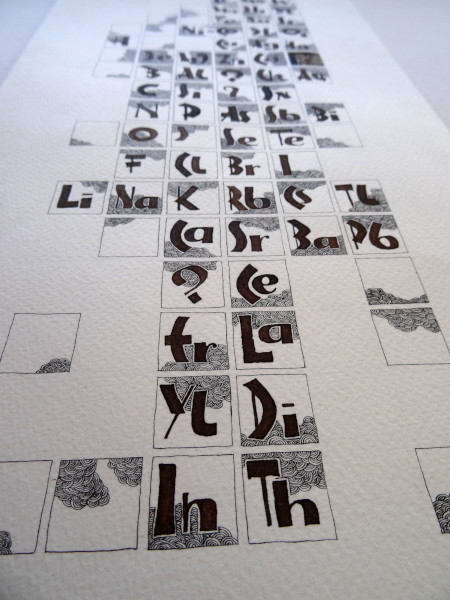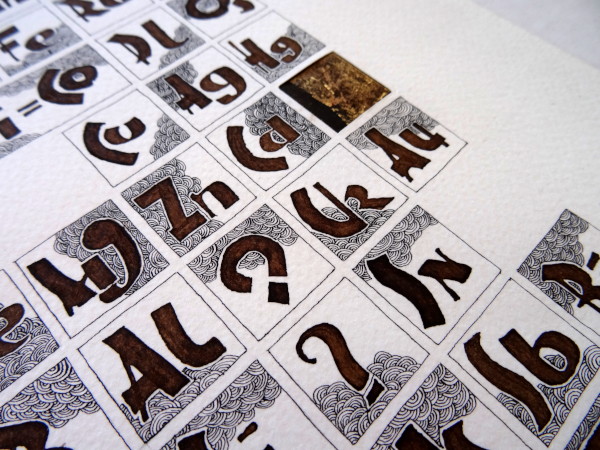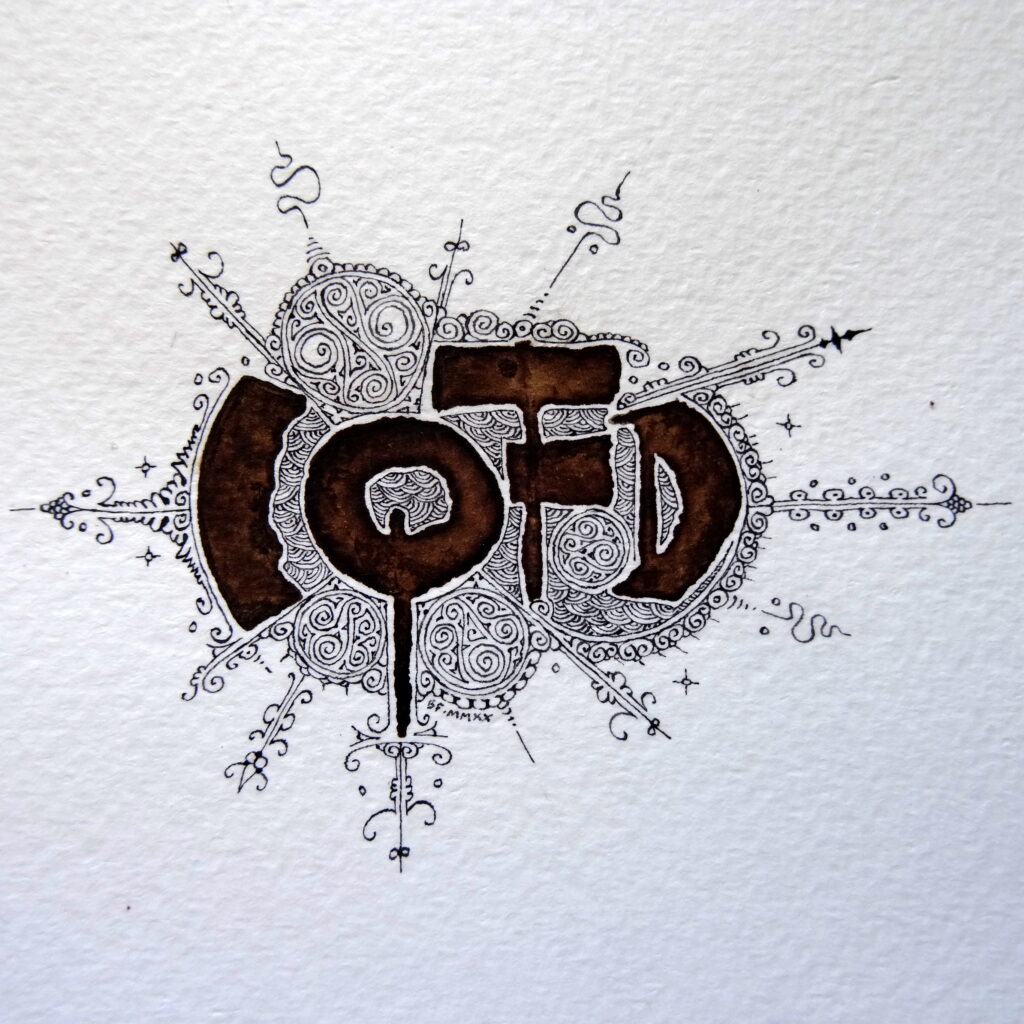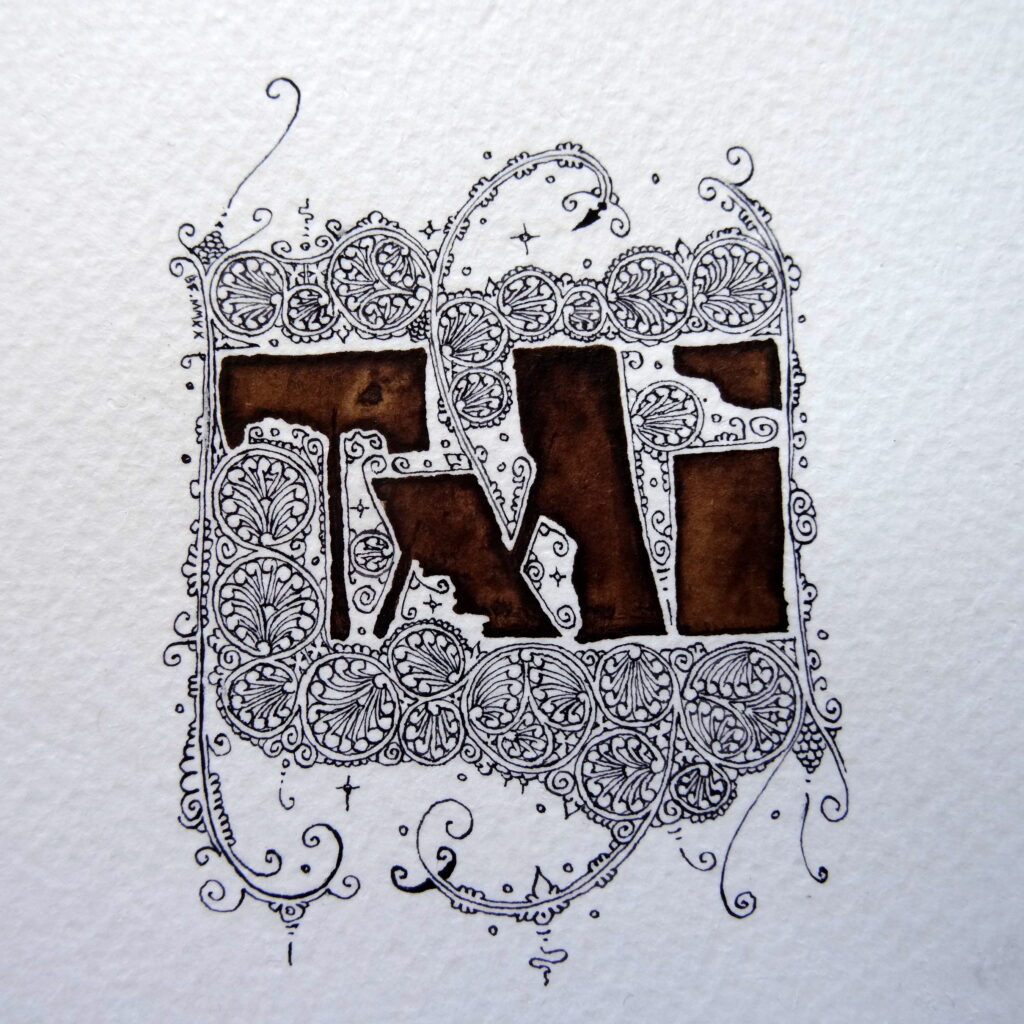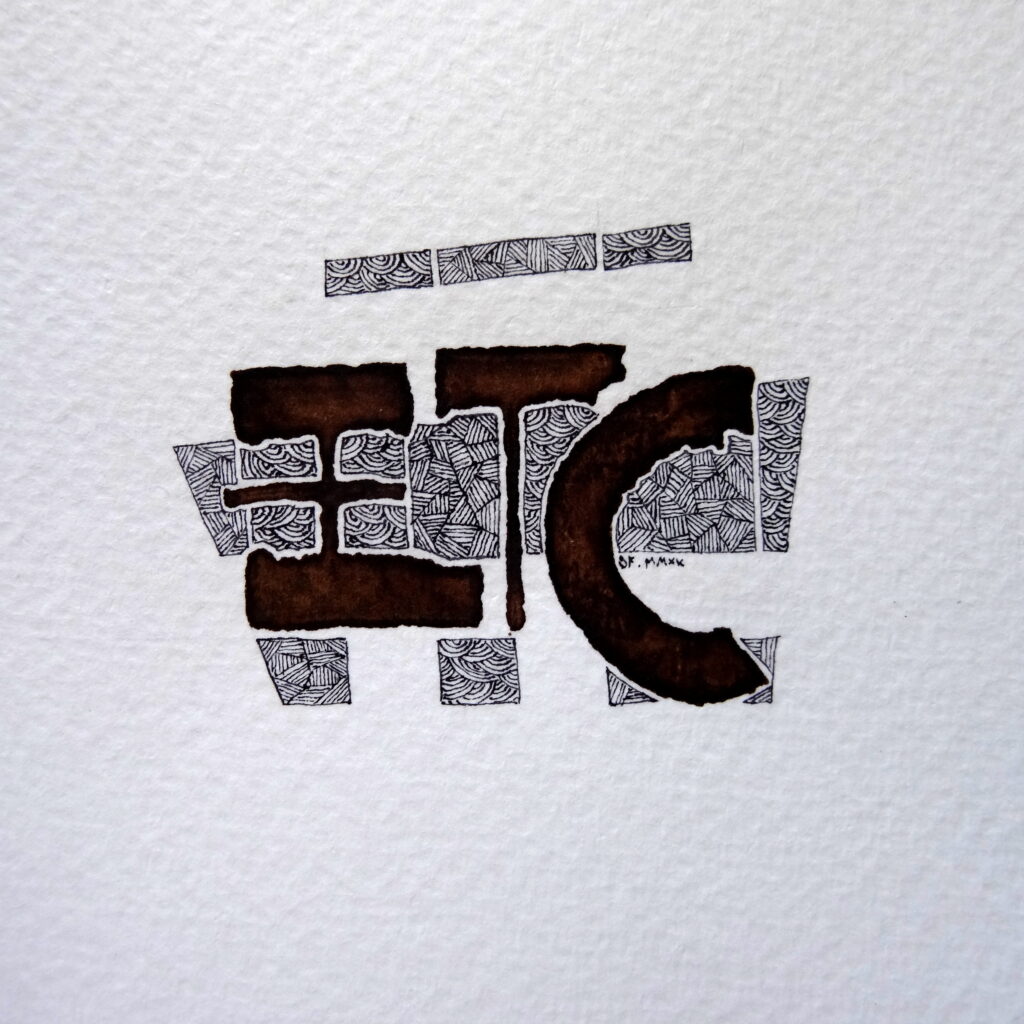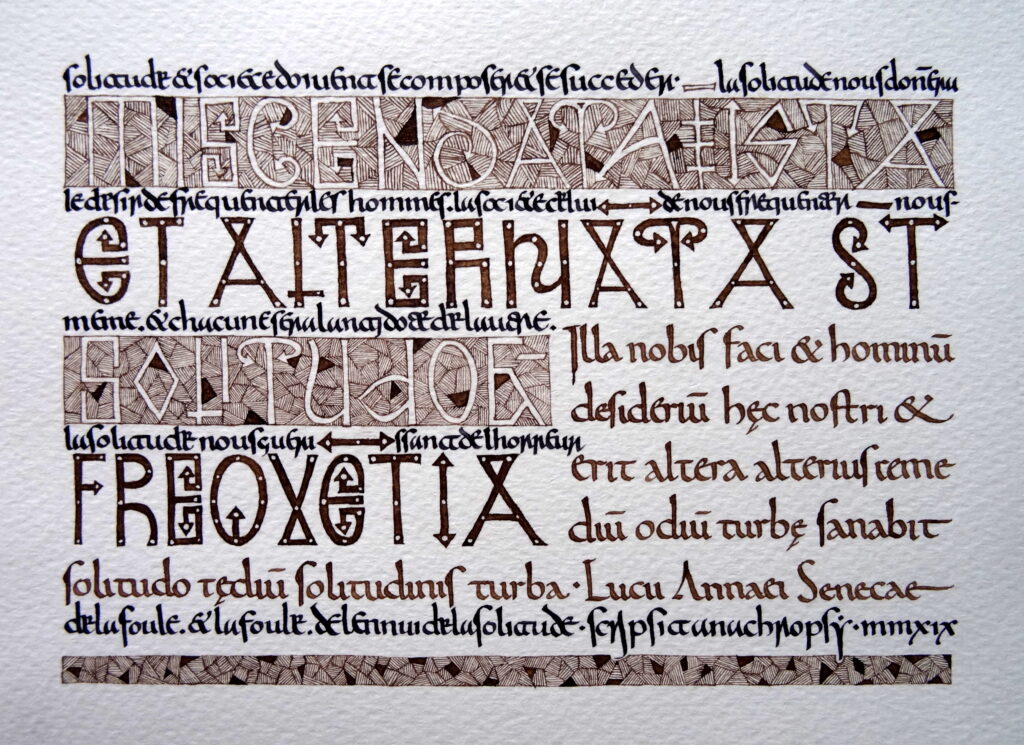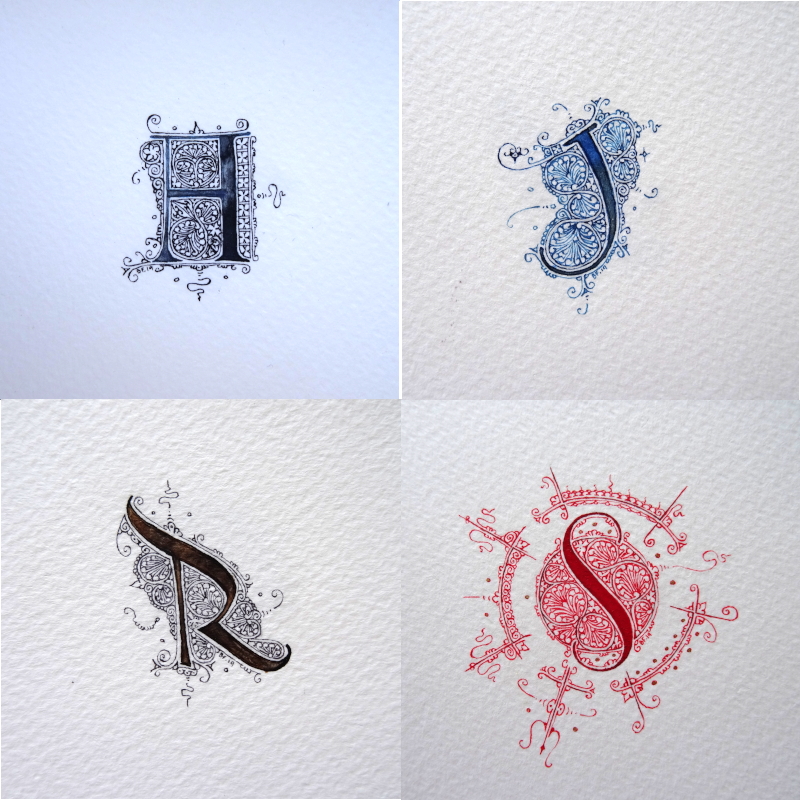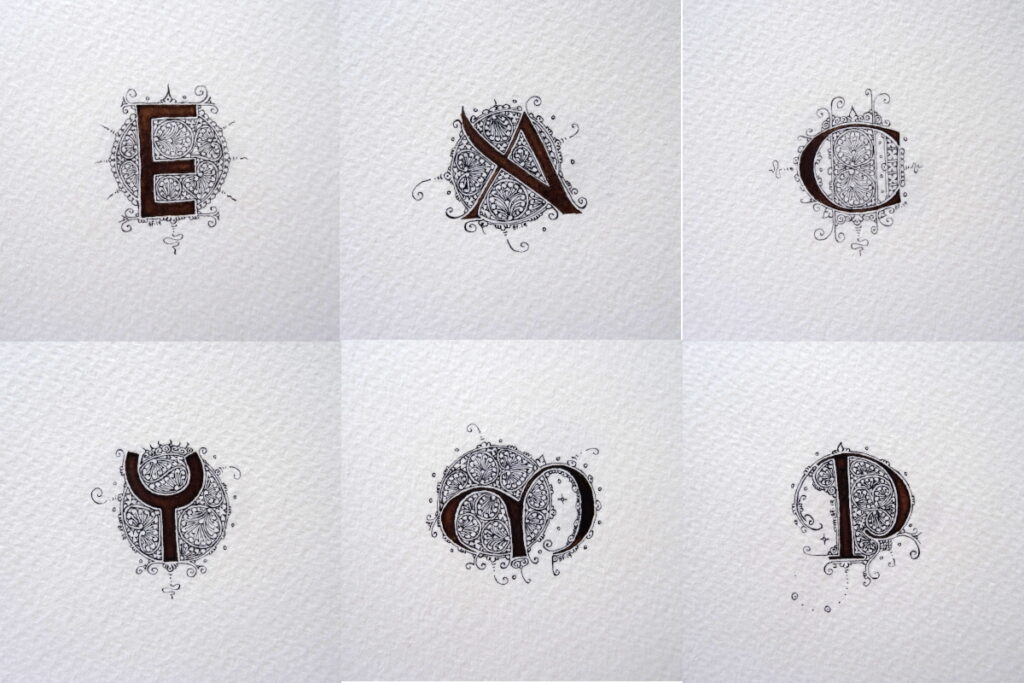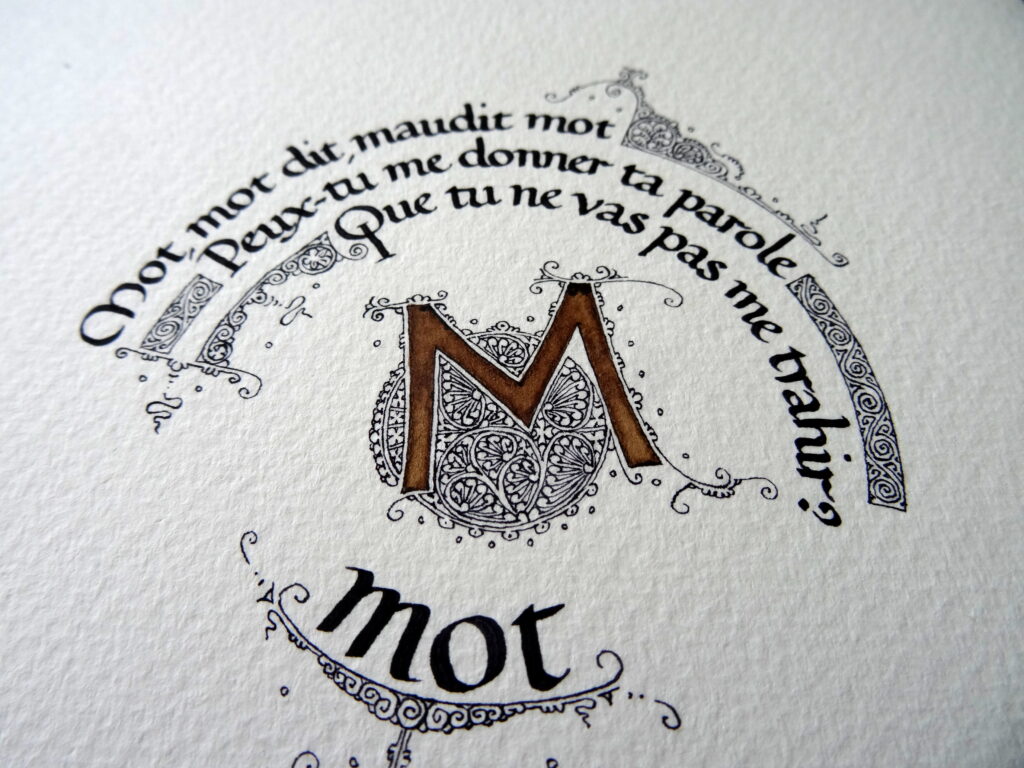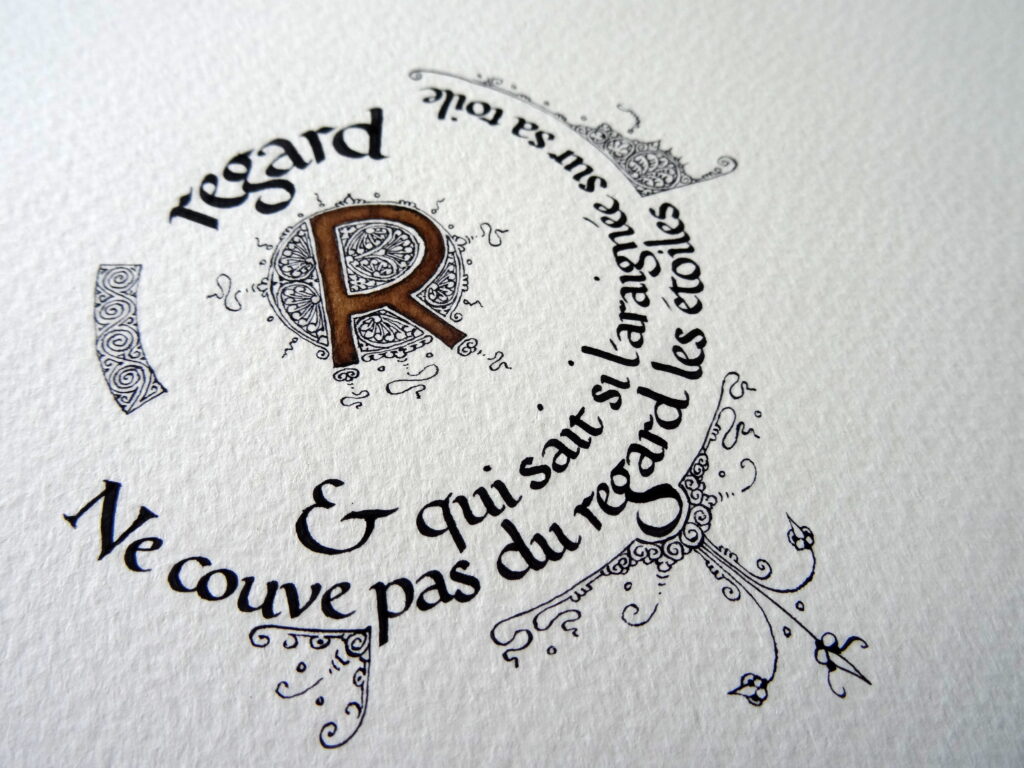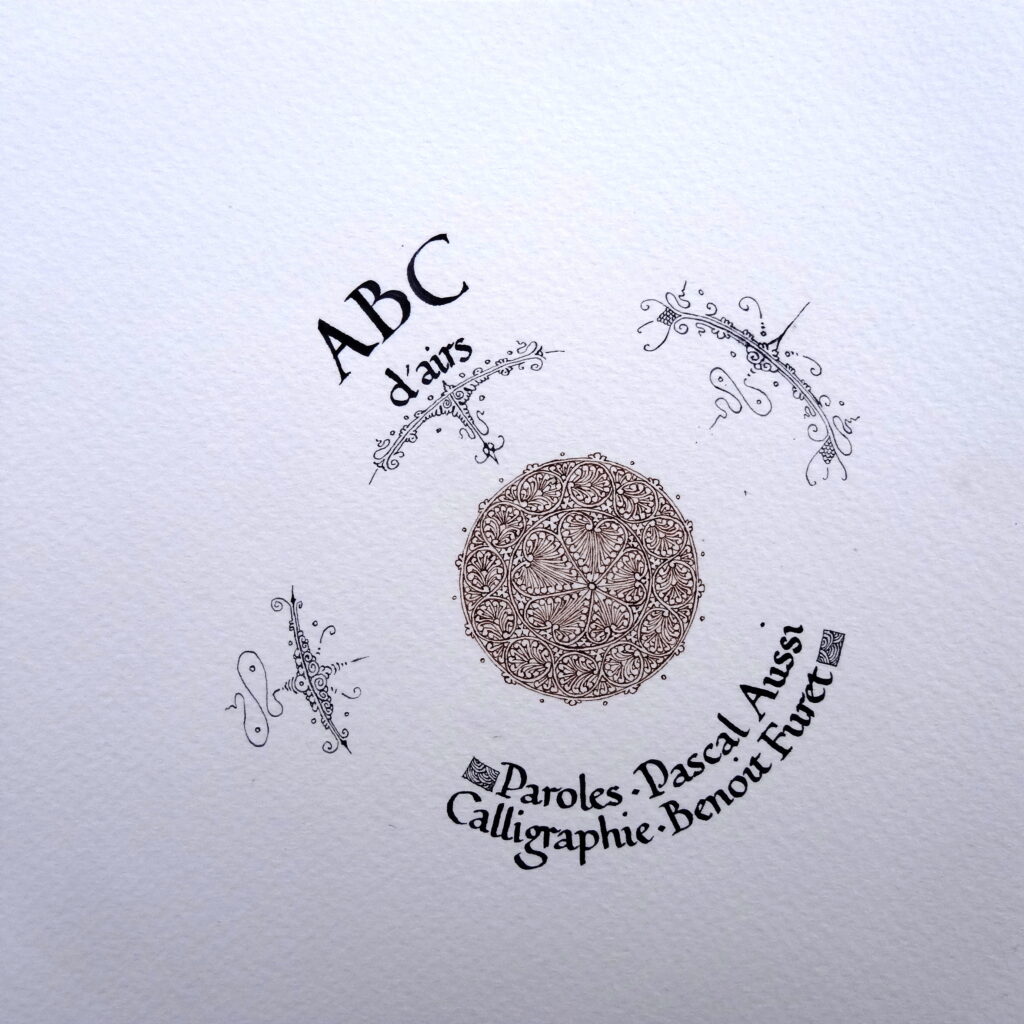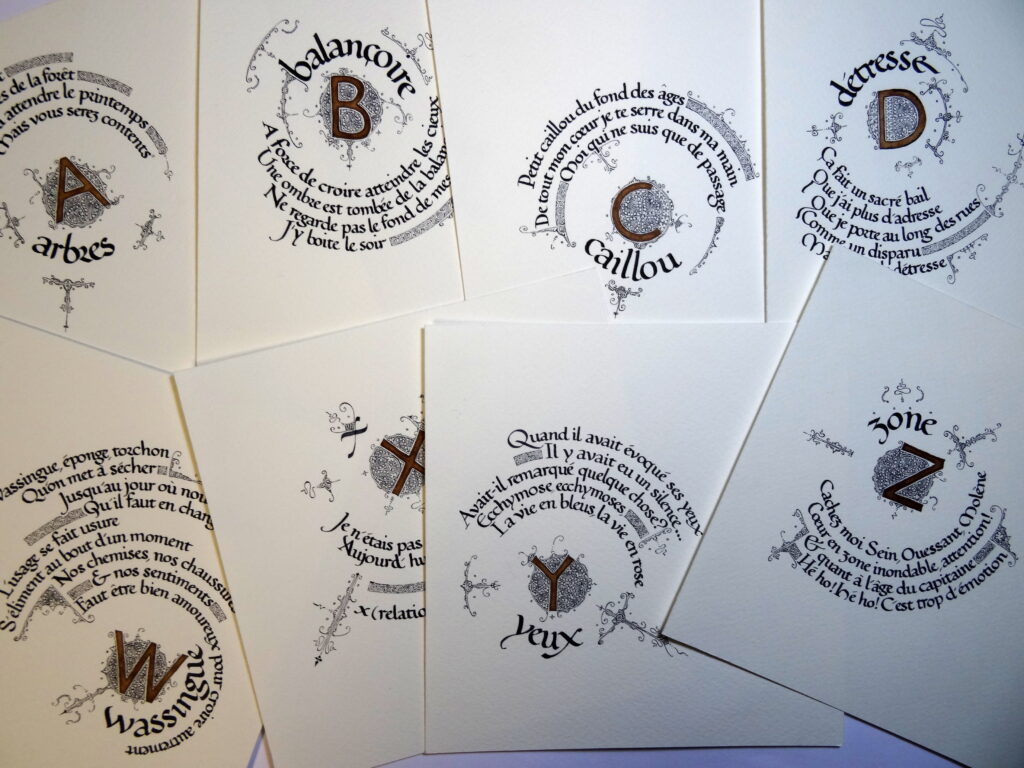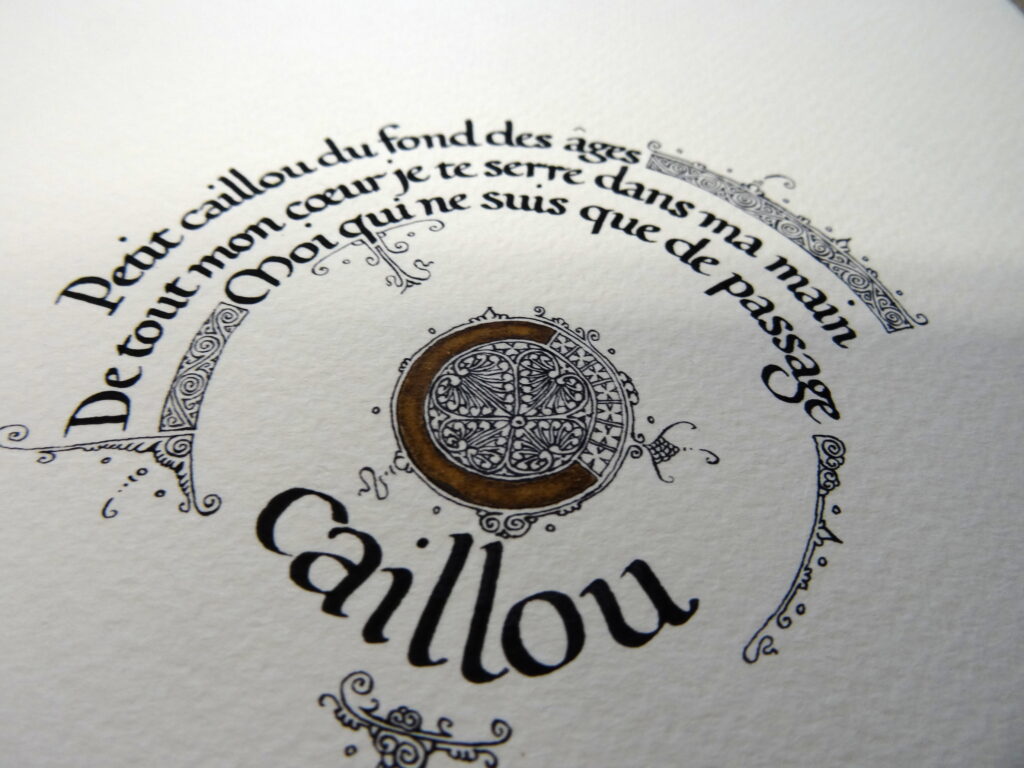And it is a reinterpretation of Mendeleev’s table as he presented it in 1870.
Of course, some elements are missing compared to what we know today and the usual representation reverses the lines and columns compared to this one but it is always good (or almost), to return from time to time to the fundamentals 🙂
I calligraphed the symbols of the elements with walnut stain and I decorated the table with iron gall ink, decorating the different cells with small clouds of electrons.
And (I shouldn’t say this but you don’t get to do it again), I had made a mistake in the position of the gold (Au), I cut out the incriminated square and replaced it with an embossing of a golden patina that my wife had made on kraft paper. I think it’s very beautiful, it’s normal, it’s my wife who made it 🙂
